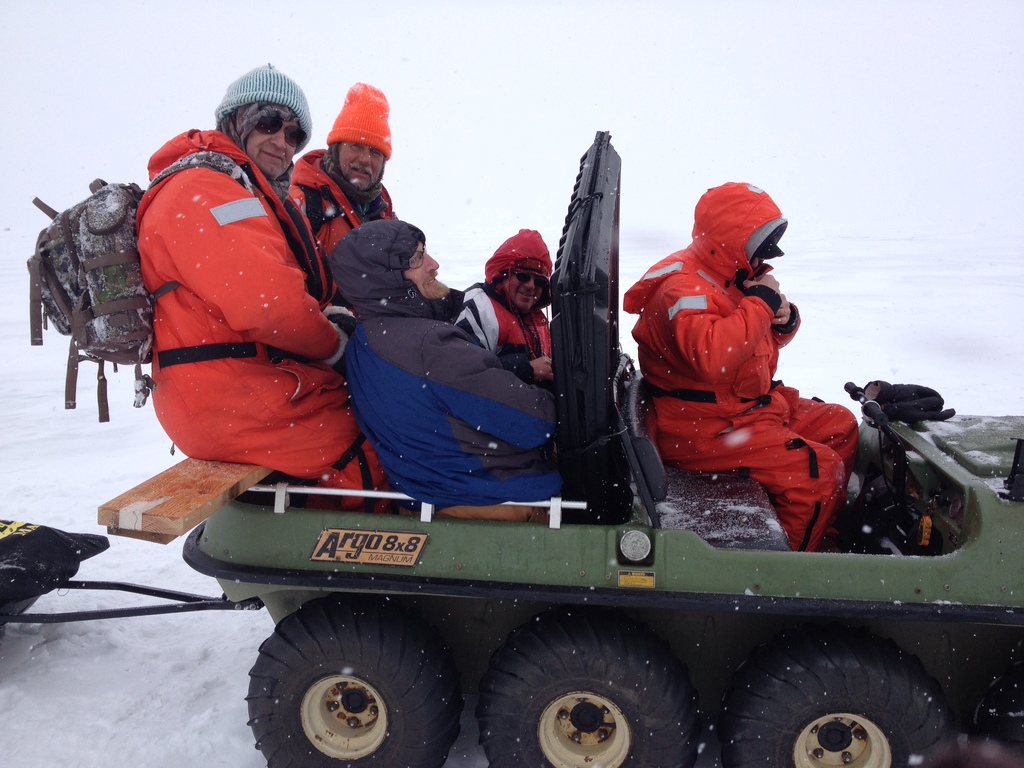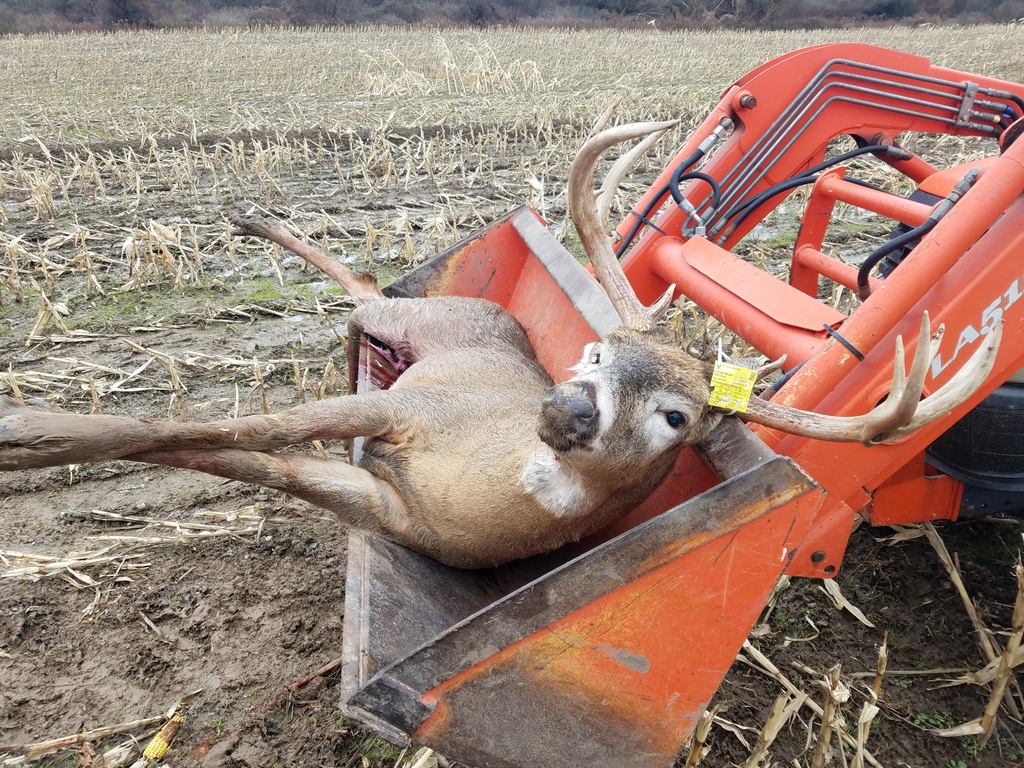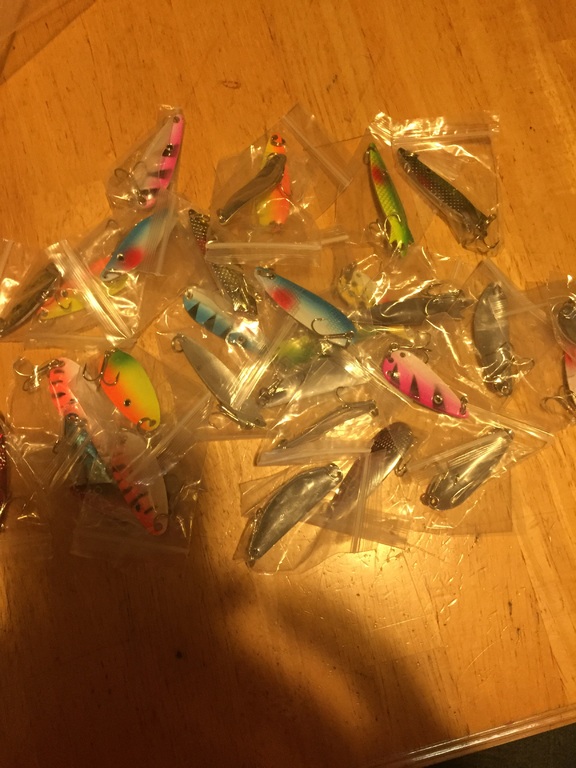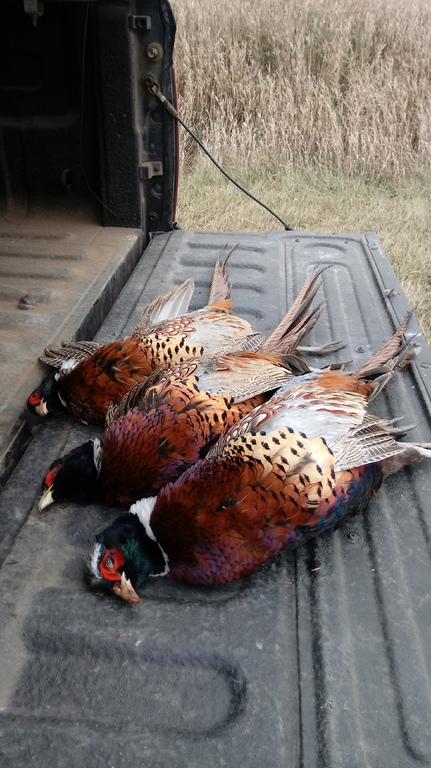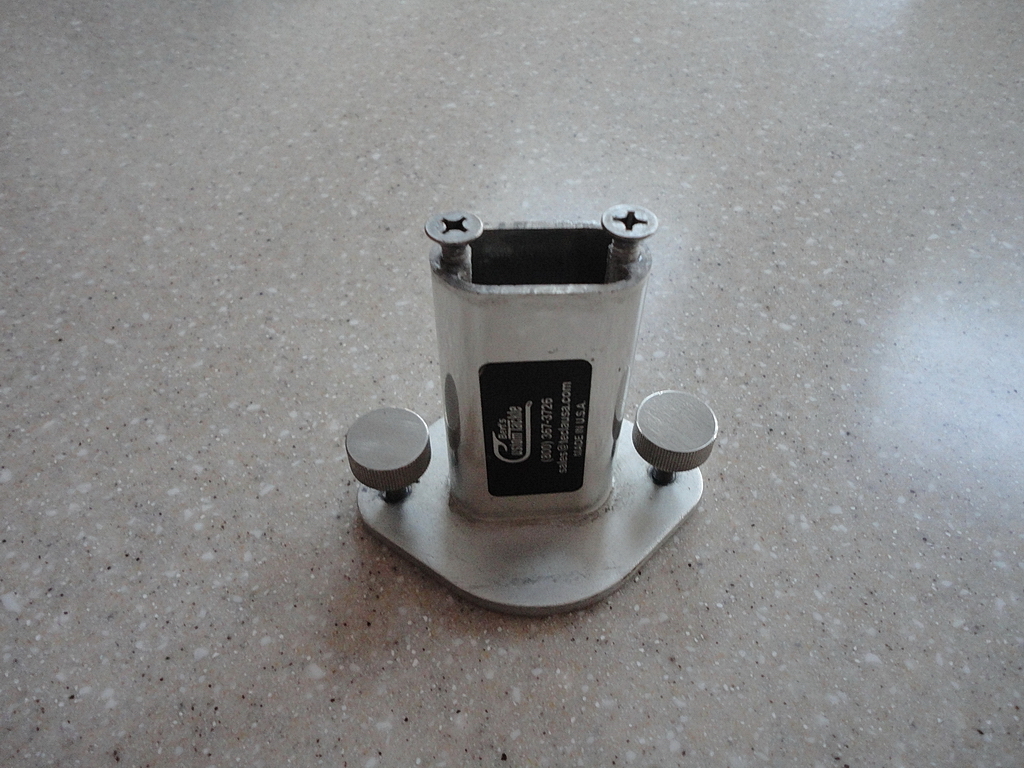-
Posts
13,865 -
Joined
-
Last visited
Everything posted by Sk8man
-
I think the bottom line to your question is:for the best taste use the silver salmon that aren't spawners (out in the lake) and fillet them without using the areas of the back and belly of the fish or the skin and grey area of the lateral line where the potential contaminants collect. Use a good brine on the portions used. As Gator mentioned anything eaten or drunk in excess is not great for your health, but if prepared and smoked properly non spawning smoked salmon can be "addictive" regardless of where it comes from I've never had the jerky so have to pass on responding to that one...
-
Fishnet - The best solution would be to order some 40 ounce weights from Harvey Oharra (Troutman87) here on LOU. They work great and his prices are the best around.
-
-
-
-
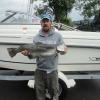
National Lake Trout Derby news
Sk8man replied to Great Lakes Lure Maker's topic in Finger Lakes Discussion
Thanks for the update Jason. Sure sounds very encouraging. One of the things I would suggest is to NOT rely ONLY mainly on Facebook for disseminating info and updates but to develop a good interactive web site for the derby. Many of the fishermen I know that take part in the derby strongly dislike all the social media crap which I know is very popular especially among younger folks, but having a strong base website is more functional from the standpoint of appealing to a wider range of people who do not wish to establish a Facebook account or interact in any way with it. If it could be a secure site allowing registration and credit card interaction I think it could significantly expand the entrant base. -
I think you may have misinterpreted the comment about the bottle float. The 3 lb weight goes at the bottom of your main and rig lines line with your individual (max of five) leaders and lures at intervals above it from bead chains swivels or barrel swivels and the bottle float (or "jug") at the very top of the main line so that it suspends the entire rig from the surface as it is trolled through the water with these lures running at set intervals on the "rig line" attached to the main line (usually SS wire or braid)
-
Good to see this thread resurrected. These days many folks are preoccupied with king fishing on Lake O and filling their boats with the latest and greatest elcetronics and that is a fun part of fishing for sure but Seth Green (or "thermocline" or "rig" fishing) on the Finger Lakes can be a blast too. Yes, it sounds complicated and a lot of work to folks not familiar with it and yes it is "old school" but it can also be VERY productive even in the absence of the latest greatest technology. I recall another previous thread where a lot of the things involved were detailed as well but Second Chance 22 (above) detailed the "basics" very well. For those folks unfamiliar with this trolling method I would suggest going out with someone who has been doing it for a while to get a real feel for it before discounting it as too complicated or too much work. Interestingly, each fisherman doing it has their own "twist" to it and even very experienced folks can benefit from seeing it done on the water. There is nothing like having a couple of big rainbows or Landlocks on one rig at the same time trying to go in different directions and then hand lining them to the boat with your heart in your mouth and adrenalin flowing.....kinda like holding a full draw on a recurve bow on a deer and trying to stop the shaking
-
Of the two items (camera vs. flasher) the flasher is more essential for overall use. Most of the time the water is very clear during the ice fishing season and muchof it is done in shallow water. Thus a lot can be learned by jigging and actually looking down the hole to observe the fish behavior. What you learn from this can be invaluable especially in terms of translating it to flasher or combo unit use. After awhile the flasher can become your "eyes" and you learn to tell pretty much what is going on down there by what is happening on the flasher (e.g. movement toward or away from your jig, movement of the fish while looking at the jig or bait, the specific movement ( e.g. spinning or lack of it) of the jig itself, anticipation of a strike etc.) and the spatial relationship of the fish to your jig or bait.I'm not saying that a camera isn't a valuable tool but I believe a flasher with a zoom or combo unit in experienced hands is a more overall useful item especially for multi-species use.
-
Mike - Before you get too heavily into buying equipment it would be a good idea to go with someone experienced in ice fishing to fully check it out and this is for a number of reasons aside from just money expenditure. Ice fishing isn't for everyone, and not knowing what you are doing out there can lead to disaster; especially early and late in the season when the ice condition is "questionable". Hopefully, there will be some good ice this year but wandering around out there without having experience and familiarity isn't a great idea even experienced folks can get into trouble when chances are taken. I'd be willing to show you the "ins and outs" of it if and when Honeoye freezes up (it is usually one of the first lakes around here to do so). It is a lot easier to understand this stuff when seeing it in person and learning by observation rather than trying ot figure it out on your own.....and a lot safer.
-
Good suggestiuons above but if you do decide to go with just a flasher make sure it has a ZOOM function
-
Great info and certainly more detailed than I had seen previously. Thanks. Very interesting about the turkeys too....
-
Yeah I guess things have changed with the fish since I started stream fishing in 1955
-
-
Stream fish don't always swim with their mouths open facing the current...sometimes they come across the stream or even downstream to examine a bait. I don't believe there is a way to prove it as far as knowing for sure that the fish is actually seeing the hook but just as an example of the inference watch a sunfish, bluegill perch or even a walleye under the ice some time and closely observe what they do when even a small jig hook point is exposed. They will stop stare at it and circle around it or back up without biting - probably because it looks unnatural to them. Often they will "test" the presentation by bumping it with their nose if they do anything at all. If you are to bait it at the tip of the hook they will usually grab it...this suggests to me that fish dio in fact see the hook point and it looks foreign to them and they become wary of it. If a bait is spinning (as in suspended by a swivel snap) they often will avoid it as well. Fish can be far more cautious and maybe even "smarter" than we give them credit for. I'm not saying this is always the case bt something to be aware of as a possibility.
-
Not sure about how many "bears" would be caught that way but what I'm refering to is when watching fish in clear water bump or mouth the bait without actually ingesting it (such as sucking it in directly) they sometimes appear to be "testing" the bait and when the hook point is bare and they feel it they spit it. I've seen it with both browns and rainbows in the streams. When ice fishing perch will do it very frequently
-
I think a main factor was that they were netted back then with large seins and sold (late 1800's and early 1900's) too.
-
Always cover the tip of the hook itself with a waxie or other etc. as it prevents the fish from seeing the hook and orients or focuses them specifically to the bait as well as reducing the hard feel of the hook while "mouthing"
-
WTG Johnny Once again.....perseverence pays off
-
Worth the trip to have it done right by Hank
-
-
Wes you have a PM
-
-


